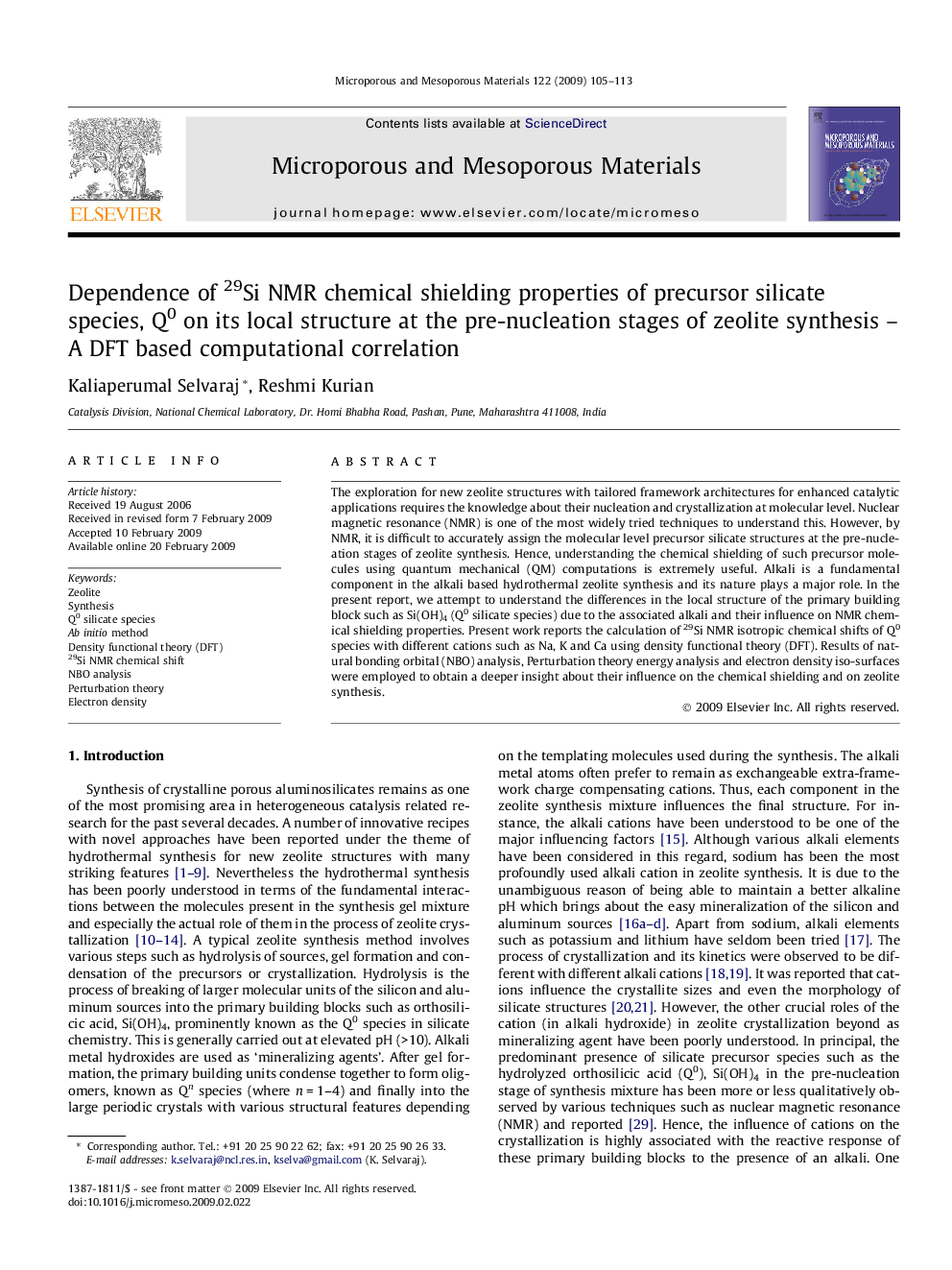| Article ID | Journal | Published Year | Pages | File Type |
|---|---|---|---|---|
| 75935 | Microporous and Mesoporous Materials | 2009 | 9 Pages |
The exploration for new zeolite structures with tailored framework architectures for enhanced catalytic applications requires the knowledge about their nucleation and crystallization at molecular level. Nuclear magnetic resonance (NMR) is one of the most widely tried techniques to understand this. However, by NMR, it is difficult to accurately assign the molecular level precursor silicate structures at the pre-nucleation stages of zeolite synthesis. Hence, understanding the chemical shielding of such precursor molecules using quantum mechanical (QM) computations is extremely useful. Alkali is a fundamental component in the alkali based hydrothermal zeolite synthesis and its nature plays a major role. In the present report, we attempt to understand the differences in the local structure of the primary building block such as Si(OH)4 (Q0 silicate species) due to the associated alkali and their influence on NMR chemical shielding properties. Present work reports the calculation of 29Si NMR isotropic chemical shifts of Q0 species with different cations such as Na, K and Ca using density functional theory (DFT). Results of natural bonding orbital (NBO) analysis, Perturbation theory energy analysis and electron density iso-surfaces were employed to obtain a deeper insight about their influence on the chemical shielding and on zeolite synthesis.
